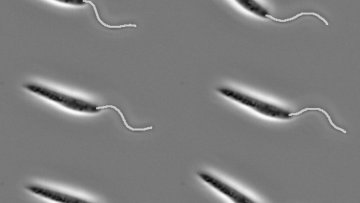Solidification processes of liquid metal alloys, bubble dynamics (as in Taylor flows), pinch-offs of liquid-liquid jets, the formation of polymeric membranes, or the structure of high concentration photovoltaic cells are described by the dynamics of multiphase fluids. On the other hand, in applications such as mass spectrometry, lab-on-a-chip, and electro-fluidic displays, fluids on the micro-scale associated with a dielectric medium are of interest. Moreover, in many of these applications one is interested in influencing (or controlling) the underlying phenomenon in order to reach a desired goal. Examples for the latter could be the porosity structure of a polymeric membrane to achieve certain desired filtration properties of the membrane, or to optimize a microfluidic device for the transport of pharmaceutical agents.
A promising mathematical model for the behavior of multiphase flows associated with the applications mentioned above is given by a phase-field model of Cahn-Hilliard / Navier-Stokes (CHNS) type. Some strengths of phase field (or diffuse interface) approaches are due to their ability to overcome both, analytical difficulties of topological changes, such as, e.g., droplet break-ups or the coalescence of interfaces, and numerical challenges in capturing the interface dynamics between the fluid phases. Deep quenches in solidification processes of liquid alloys or rapid wall hardening in the formation of polymer membranes ask for non-smooth energies in connection with Cahn-Hilliard models. Analytically, this gives rise to a variational inequality coupled to the equations of hydrodynamics, thus yielding a non-smooth system (in the sense that the map associated with the underlying operator equation is not necessarily Frechet differentiable). In contrast to phase-field approaches,
one may consider sharp interface models. In view of this, our microfluidic applications alluded to above are formulated in terms of sharp interface models and Hele-Shaw flows. In this context, we are particularly interested in applications of electrowetting on dielectric (EWOD) with contact line pinning. The latter phenomenon resembles friction, yields a variational inequality of the second kind, and – once again – it results in an overall nonsmooth mathematical model of the physical process.
In both settings described above, optimal control problems are relevant in order to influence the underlying physical process to approach a desired system state. The associated optimization problems are delicate as the respective constraints involve non-smooth structures which render the problems degenerate and prevent a direct application of sophisticated tools for the characterization of solutions. Such characterizations are, however, of paramount importance in the design of numerical solution schemes.
This talk addresses some of the analytical challenges associated with optimal control problems involving non-smooth structures, offers pathways to solutions, and it reports on numerical results for both problem classes introduced above.


